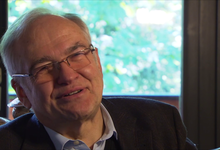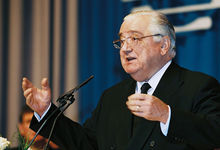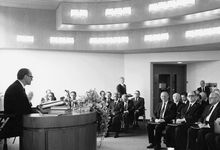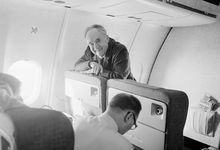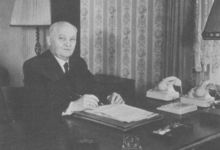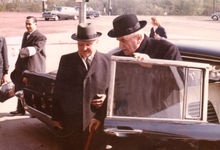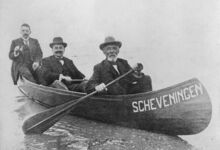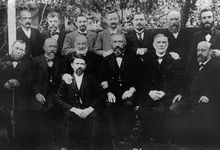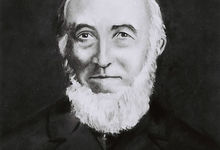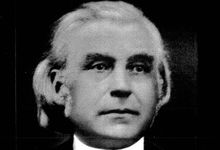The architect of the New Apostolic Church
He was not the first to hold this office, but the first with to bear the title. Chief Apostle Hermann Niehaus was born on 28 July 1848, 175 years ago. This is the story of the man who turned individual New Apostolic congregations into a church.
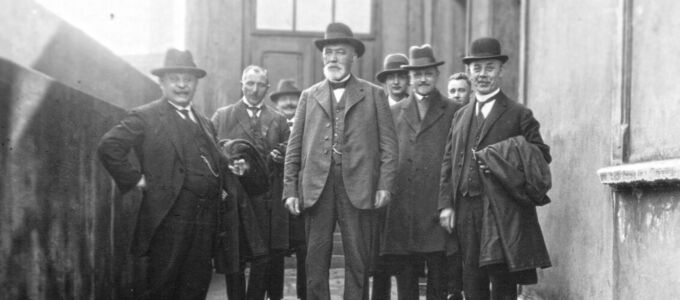
His predecessor is considered to be the rightful founder of this ministry: Friedrich Krebs, who was also known as the Father of Unity in his time. However, the official designation of this ministry is only formally recorded after his death, specifically in the statutes of 1906. And these already bear the stamp of Hermann Niehaus.
Getting down to work
Hermann Christoph Niehaus was seen as an authority among the Apostles: the New Apostolic congregations in Western Germany were practically rooted in his house. He had come to believe through Apostle Menkhoff and had been sealed by Apostle Schwarz. In the tradition of these two leaders, he was considered a guarantor of stability.
He grew up in modest circumstances and worked hard on his parents’ farm, developing the rural property into a handsome estate. He further proved his drive and willpower when he took up the office of Chief Apostle in 1905.
- In the same year still, he visited all the Apostle districts in Germany, restructured the districts, and ordained three more Apostles.
- In 1907 the local church registers began to refer to the church by its new designation, namely the New Apostolic Congregation.
- Starting in 1907 he published the Sonntagsblatt [Sunday paper], which transitioned into the Neuapostolische Rundschau [New Apostolic Review]. This developed into a print shop, which eventually developed into the Church publishers.
- 1908 marked the publication of the Church’s first teaching material for children. This was followed in 1916 by a religious instruction textbook, the precursor to Questions and Answers.
- Starting in 1914 soldiers fighting in the First World War received communion in the form of wafers sprinkled with drops of wine. In 1919 the combined wafer was introduced for general use.
- In 1921 the New Apostolic Church was granted the status of a corporation under public law in Baden, and in 1925 in Hamburg.
- In 1922 the College of Apostles was established in the form of an association, a forerunner of today’s New Apostolic Church International.
Strength in unity
His education was really not the best. In order to be able to preach at all, Hermann Niehaus even had to take private lessons in standard German. Because he had only learned Low German at school. But he was so down-to-earth and wise to surround himself with men who compensated for his deficiencies and complemented his strengths.
Like Apostle Bornemann, for example, whom he had in mind as his successor. His untimely death shook him to the core: “Heinrich, Heinrich, why have you left me?” he is said to have exclaimed upon learning of Apostle Bornemann’s death.
And then there was Apostle Brückner. In the beginning, the Chief Apostle and he were a real dream team. As experienced leaders, the two of them were able to make a lot of things happen. But then they found themselves at loggerheads.
From innovator to preserver
While Apostle Brückner pushed for progress and developed ever more unusual ideas, Chief Apostle Niehaus was primarily concerned with regaining peace and stability after the turbulent times of the First World War. In the end, about ninety ministers and six thousand members left the New Apostolic Church together with Apostle Brückner, who founded the Reformiert-Apostolische Gemeindebund (Reformed Apostolic Association).
This was not the only schism: from the early 1910s, Apostle Niemeyer from Australia and his protégé, Apostle Klibbe from South Africa, had already struck out on their own. This led to the creation of the Apostolic Church of Queensland in Australia and the Old Apostolic Church in the Western Cape.
When things like this happened, another character trait came to the fore: Hermann Niehaus was a fatherly type, who led with as much severity as gentleness. His patient endurance, however, turned into fierce relentlessness when he encountered resistance or even felt opposition.
Most of the time, however, Hermann Niehaus was a lovable bully whose peculiar sense of humour and rustic irony could at best frighten the faint-hearted. But above all, he will always be known as the church leader who had taken over 517 individual congregations when he took office, and who handed over an ecclesiastic organisation with 1,771 congregations to his successor.


